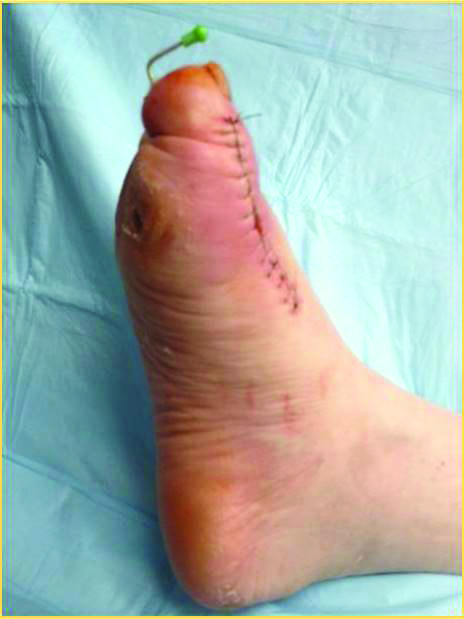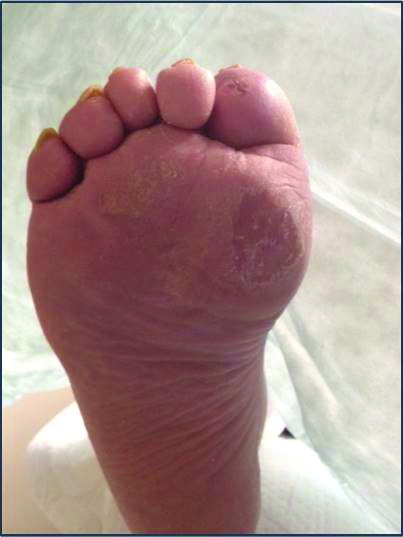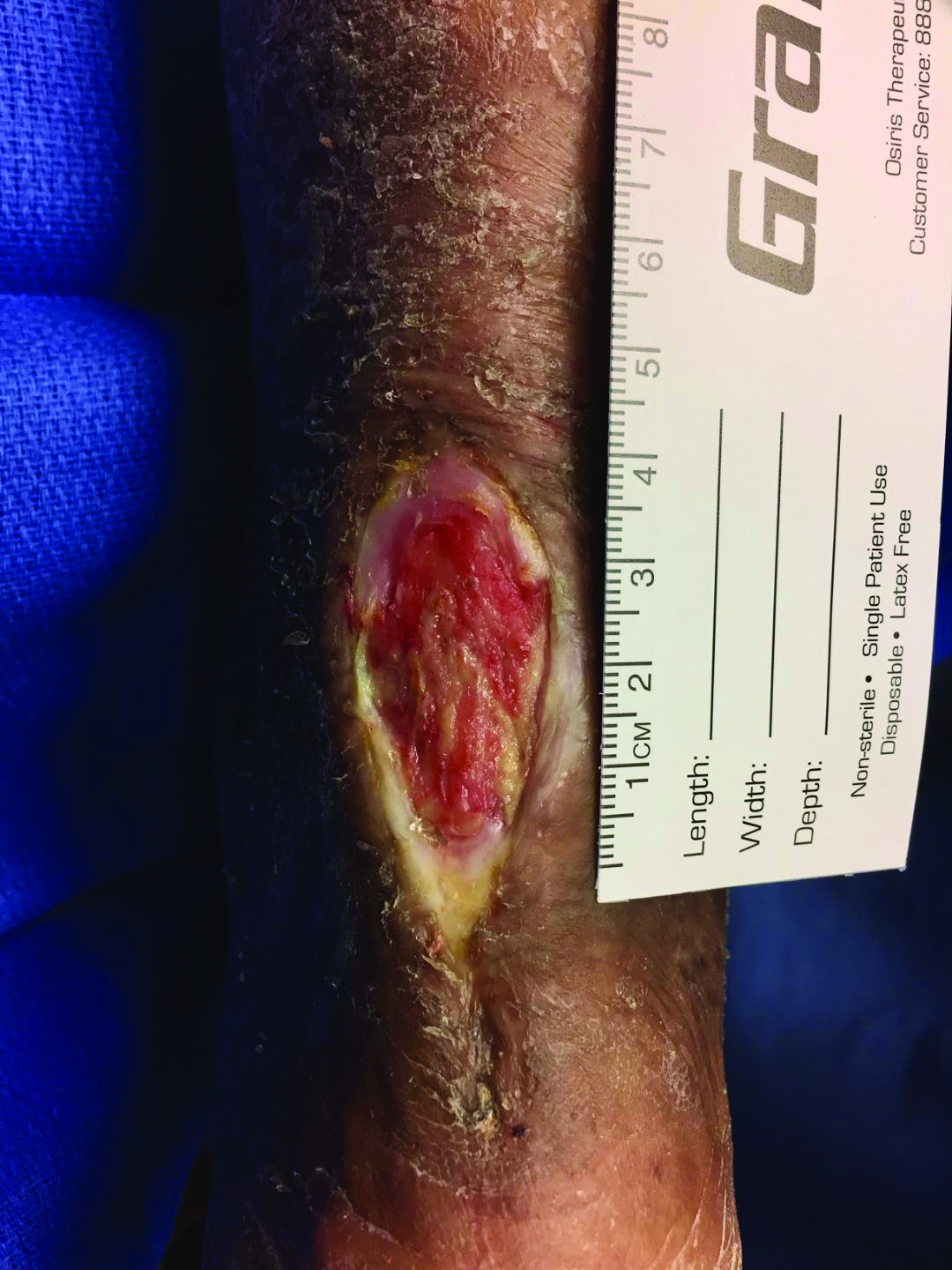Understanding The Potential Impact Of Hyperglycemia On Post-Op Healing
Patients with diabetes are not void of surgical needs, whether it is emergent surgery or elective surgery. These needs can, however, come with a set of risks for the patient with regard to overall healing and the success of the procedure. Elevated blood glucose levels are often associated with multiple comorbidities that will ultimately affect the overall outcome by increasing the risk for delayed healing, non-healing, infection and limb loss. Therefore, when a patient with diabetes is in need of a surgical procedure, it is crucial that one appropriately evaluates the parameters surrounding the patient’s current blood glucose levels in order to help ensure medical optimization for the procedure. It is not uncommon for a surgeon to postpone a surgery if preoperative evaluation reveals elevated blood glucose levels.
The Endocrine Society indicates that patients with hyperglycemia and a hemoglobin A1c (HbA1c) of 6.5 percent or higher can be identified as having diabetes.1 During the perioperative period, the American College of Physicians recommends maintaining serum glucose between 140 mg/dl and 200 mg/dl (7.8-11.1 mmol/L) whereas the British National Health Service guidelines recommend a range of 108-180 mg/dl (6-10 mmol/L).2
Understanding the effects of the hyperglycemic state on surrounding tissue structures becomes crucial in the decision-making process as elevated blood glucose levels can have many biological effects that one should consider in conjunction with the normal cascade of events in the three stages of wound healing: inflammatory, proliferative and remodeling. Many cells, including hepatocytes, endothelial cells, neurons, nephrons and immune cells can be susceptible to enhanced glucose toxicity as a result of acute illness. Elevated blood glucose levels impair neutrophil function and can result in the overproduction of reactive oxygen species, free fatty acids (FFAs), inflammatory mediators and an enhanced response to endotoxins. These pathological changes contribute to direct cellular damage and vascular and immune dysfunction.1
Researchers have demonstrated that hyaluronan, a glycosaminoglycan present in skin and many tissues of the body, is impaired in patients with diabetes.2 Since it is found in the glycocalyx (pericellular coat) of endothelial cells of cutaneous microvessels, the degradation of hyaluronan in the presence of a hyperglycemic state is critical and will lead to an increase in leukocyte adhesiveness, triggering the release of cytokines. This release will ultimately contribute to a proinflammatory environment. Such changes are likely to increase oxidative damage, decrease the proper vascular endothelial cell response and impede neoangiogenesis along with other repair responses during the proliferative and remodeling phases of wound healing.2
The end result is a prolonged presence of inflammatory markers and the inflammatory phase of wound healing, disrupting the timing of extracellular matrix synthesis and ultimately reducing the quality of the restored collagen architecture. Patients with poor glycemic control, therefore, appear to be in a heightened or prolonged inflammatory state, even in the absence of wounds or infection. This can promote a poor surgical outcome. Excessive glucose levels may lead to reduced complement activity, exacerbation of inflammatory pathways, modifications in the innate immune system, impaired endothelial and hepatic mitochondrial functions, protein glycosylation and elimination of ischemic preconditioning. When there is stress hyperglycemia on a multi-organ level, acute complications may range from increased susceptibility to infections and polyneuropathy to impaired microcirculation, cardiovascular risk and renal failure.3
This is important to note when considering potential surgeries for patients with diabetes. Overall outcomes, healing time and risk for limb loss are increased in either prophylactic, elective, emergent or curative surgeries. It is prudent to educate patients on proper glycemic control before undergoing any surgical intervention. The surgeon must take appropriate measures to coordinate a multidisciplinary approach in optimizing the patient. Accordingly, the role of the primary care provider, endocrinologist and other specialists are crucial.
When Does Preoperative Blood Glucose Impact The Safety Of Surgical Procedures?
In the presence of infection, most diabetic foot surgery falls into the categories of emergent or curative surgery as it often involves a limb-threatening infection.4 When this is the case, early surgical intervention is essential, whether it is simple debridement of soft tissues, decompression of a deep abscess or amputation.4 If the case warrants prompt surgical intervention requiring exploration and debridement and the patient has elevated blood glucose levels, this can have an effect on the overall, long-term outcome although this will often not preclude the surgery given its urgency. Fluctuating glucose concentrations and hyperglycemia are often associated with poor healing, increased rates of surgical infection, myocardial infarction, stroke and death.5,6 This may also prolong utilization of antibiotics and increase the number of required debridement procedures.5 It is optimal to ensure glycemic control in the perioperative period in an effort to decrease morbidity when performing surgery on these patients.
Although perioperative glucose control is critical in decreasing morbidity and mortality as well as predicting the patient’s outcome, the fasting blood glucose threshold at which one should delay or cancel a surgical procedure is at the discretion of the perioperative physicians (anesthesiologists in consultation with surgical colleagues). The nature and urgency of the surgery in question often dictates the ultimate protocol.7 Although tight preoperative glycemic control seems ideal, there is no definitive literature that defines an ideal range or duration of glucose control prior to surgery.7
Essential Principles In Perioperative Management Of The Patient With Diabetes
In order to optimize outcomes, the surgeon must take several principles into consideration in the perioperative management of the hyperglycemic patient.
1. Identify the type of diabetes, the current diabetes treatment plan and resultant effectiveness as well as the proposed surgical procedure.7
2. Tight glucose control requires frequent measurement (almost hourly) of glucose concentration along with insulin therapy if warranted in an effort to further control blood glucose levels. Patients with type 1 diabetes are more prone to developing ketoacidosis or hyperosmolar hyperglycemia nonketotic syndrome. Those with type 2 diabetes who use insulin may require similar management.7
3. Consider the use of short-acting and rapid-acting insulins. Routes of administration include intravenous (as a bolus or continuous infusion) and subcutaneous.7
4. Be aware of glucose- and potassium-containing solutions and their effects on hyperglycemia, but keep in mind these may be required to address hypoglycemia when warranted.7 For example, D5W can raise blood sugar more than normal saline, and should be adjusted for accordingly.
5. Additional insulin may be necessary in the perioperative setting due to insulin resistance that may occur as a result of the stress of surgery.7
6. Tight perioperative glycemic control (blood sugar levels between 70 and 110 mg/dl) reduces the risk of adverse events such as death, stroke and myocardial infarction. In 2001, a large randomized controlled trial involving critically ill surgical patients showed that tight glucose control (defined as the restoration and maintenance of blood glucose therapy between 80 and 110 mg/dl) via intensive insulin therapy was associated with a decreased mortality and rate of complications.3
In Conclusion
No specific guidelines are currently in place regarding whether to proceed with emergent surgical intervention in the presence of infection when addressing the infection is critical. However, it is important to manage hyperglycemia in the perioperative period and understand managing protocols via a team approach. In our experience, emergent or curative surgeries often require a more aggressive surgical approach to eradicate infection risk and help prevent limb loss.
In elective or prophylactic procedures, it is best to proceed with caution and make certain all parameters for healing are optimized. This would involve a stable fasting blood glucose level or HbA1c along with appropriate assessment of vascular integrity and indicators of long-term healing potential. It is crucial to make all patients with diabetes aware of the risks surrounding surgical outcomes and the role their blood glucose levels play in the overall healing process. Communication with anesthesia and/or internal medicine colleagues is imperative, and ensures that guidelines are in place for proper glucose management and optimal care of the patient.
Dr. Scott is a third-year resident at the Louis Stokes Veterans Hospital in Cleveland.
Dr. Hadi is attending faculty at the Louis Stokes Veterans Hospital in Cleveland and the Akron Community Based Outpatient Clinic (CBOC) in Akron, Ohio. She is a Fellow of the American College of Foot and Ankle Surgeons, and a Diplomate of the American Board of Foot and Ankle Surgery.
1. Duggan EW, Carlson K, Umpierrez GE. Perioperative hyperglycemia management-an update. Anesthesiology. 2017;126(3):547-560.
2. Cheng HQ. Perioperative management of endocrine diseases. In: Papadakis MA, McPhee SJ, Rabow MW, eds. Current Medical Diagnosis and Treatment 2020. 59th ed. New York, NY: McGraw-Hill; 2019:46-55.
3. Preiser J, Ichai C. Glycemic control. In: Hall JB, Schmidt GA, Kress JP, eds. Principles of Critical Care. 4th ed. New York, NY: McGraw-Hill; 2014.
4. Frykberg RG, Wittmayer B, Zgonis T. Surgical management of diabetic foot infections and osteomyelitis. Clin Podiatr Med Surg. 2007;24(3):469–482.
5. Beauchamp LC, Mostafavifar LG, Evans DC, Gerlach AT. Sweet and sour: impact of early glycemic control on outcomes in necrotizing soft tissue infections. Surgical Infect (Larchmt). 2019;20(4):305-310.
6. Kotagal M, Symons RG, Hirsch IB, et al. Perioperative hyperglycemia and risk of adverse vents among patients with and without diabetes. Ann Surg. 2015;261(1):97–103.
7. DeCou J. Perioperative assessment of diabetes. In: Johnson KB. Clinical Pharmacology for Anesthesiology. New York, NY: McGraw-Hill; 2015:251-256.
8. Shakya S, Wang Y, Mack JA, Maytin EV. Hyperglycemia-induced changes in hyaluronan contribute to impaired skin wound healing in diabetes: review and perspective. Int J Cell Biol. 2015;2015:701738.














